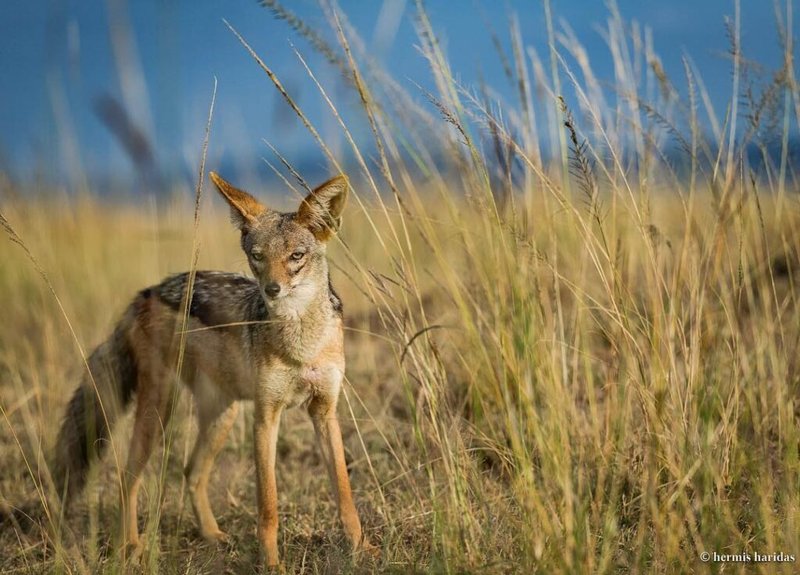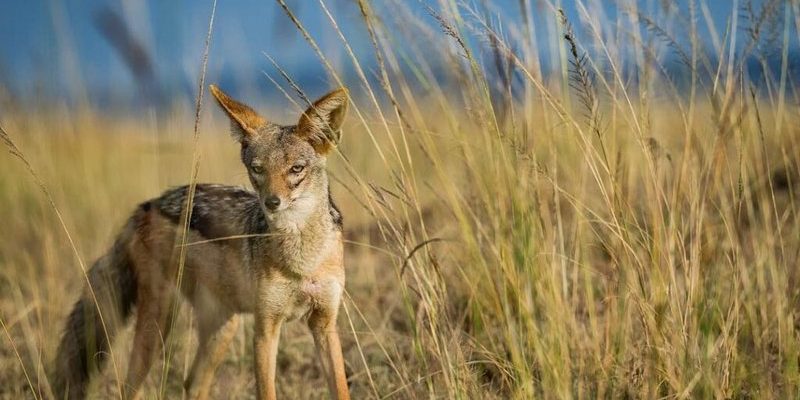
Like many wild animals, the black-backed jackal has become the subject of numerous myths and misconceptions. Some believe they’re nothing more than scavengers, while others think they pose a significant threat to livestock. Honestly, when you dig deeper, the reality isn’t nearly as black and white as it seems. So, let’s clear up some of the common myths surrounding these intriguing creatures—as if we were chatting over coffee and uncovering the truth together.
Myth 1: Black-Backed Jackals Are Just Scavengers
One of the most persistent myths about black-backed jackals is that they primarily scavenge off the remains of other animals. Sure, these jackals aren’t above taking advantage of a free meal now and then—who wouldn’t? But here’s the thing: they’re also skilled hunters.
Black-backed jackals primarily hunt small mammals, birds, and insects. They often work in pairs to increase their chances of success, showcasing a cooperative hunting strategy. For example, one jackal might distract prey while the other moves in for the kill. So, while they do scavenge, don’t underestimate their hunting abilities. This adaptability is key to their survival in the wild.
Myth 2: They Are a Significant Threat to Livestock
People often view black-backed jackals as dangerous predators that threaten livestock. It’s understandable, considering how farmers feel protective over their herds. However, the reality is more nuanced.
While black-backed jackals do sometimes prey on young livestock, they generally prefer smaller animals. Their hunting habits don’t typically put adult livestock in jeopardy. Moreover, studies have shown that the actual impact on livestock can be quite minimal. Farmers may find it more beneficial to employ preventive measures, like fencing and guard animals, rather than resorting to lethal control methods.
Myth 3: Black-Backed Jackals Are Solitary Creatures
You might picture a lone jackal roaming the wild, but this isn’t quite right. Black-backed jackals are known for their social behaviors. They often form family groups or pairs, which is essential for hunting and raising young.
These family units work together and communicate through various vocalizations. You might have heard their calls echoing through the night, which can sound eerie at times! This social structure helps them thrive in their environments, showing just how important teamwork is in the wild.
Myth 4: They Are Purely Nocturnal Animals
Another common misconception is that black-backed jackals are only active at night. While they are indeed crepuscular, meaning they prefer to be out during dawn and dusk, they can also be active during the day.
Their activity patterns depend on their environment and food availability. For instance, in areas with human activity, they might shift to nighttime foraging to avoid encounters. However, in quieter regions, you’re just as likely to spot them during daylight. This flexibility helps them adapt to different habitats and situations.
Myth 5: Black-Backed Jackals Are Dangerous to Humans
Many people fear wild animals, thinking they pose a threat to our safety. When it comes to black-backed jackals, fear not! These animals typically shy away from human contact.
While they might defend their territory if provoked, attacks on humans are extremely rare. Jackals prefer to keep their distance, and usually, they only pose a threat if they feel cornered or threatened themselves. Understanding their natural behavior helps us appreciate them better, rather than fearing them.
Understanding Black-Backed Jackal Behaviors
So, why do these myths persist? Part of the issue lies in how we view wildlife. Many people see animals through a lens of fear or misunderstanding, which leads to mischaracterizations.
By learning more about black-backed jackals and their true behaviors, we can foster a greater appreciation for these unique creatures. Observing wildlife without preconceived notions allows us to coexist in harmony. After all, every species plays a role in its ecosystem, and understanding that can help us protect them.
It’s easy to get caught up in myths and misconceptions, especially about animals as captivating as the black-backed jackal. By debunking falsehoods, we gain clarity about their roles in nature and their actual behaviors.
Next time you hear a story about these jackals, remember the truth: they’re not just scavengers; they’re skilled hunters, social creatures, and generally shy around humans. By embracing a deeper understanding, we can appreciate the black-backed jackal not just as mysterious animals, but as vital components of their ecosystems. So, let’s keep the conversation going and continue to learn about the wonders of wildlife!

